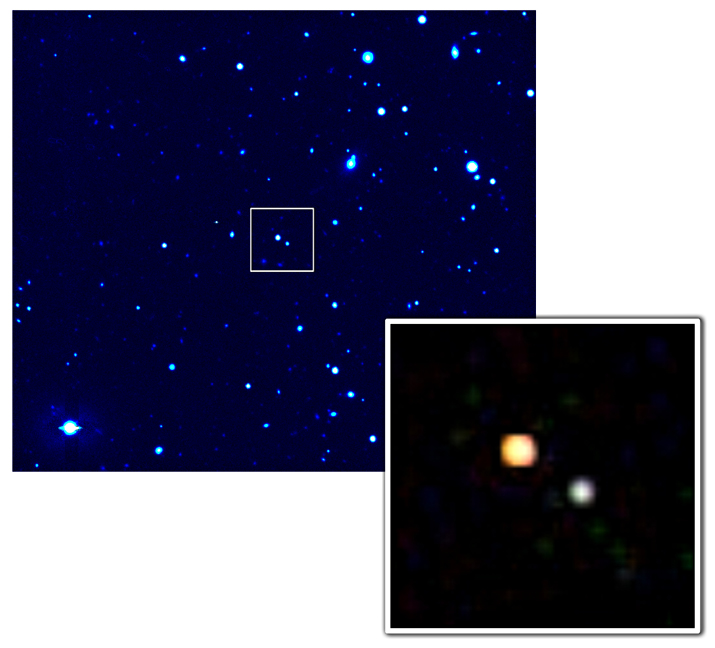
 Credit: NASA/SAO/CXC/P.Green et al.
Credit: NASA/SAO/CXC/P.Green et al.
The Universe Gets Slightly Less Interesting
According to Einstein, matter bends light. Astronomers have found that large
distributions of mass can act like a "gravitational lens" to bend light from
background galaxies, forming two (or more) identical images of the same object.
A pair of distant active galaxies, Q2345+007 A & B, were
thought to be identical images formed by such a "gravitational lens", but they
were thought to be an especially unusual case, since there was no discernible
foreground cluster of galaxies seen in optical images to provide the mass for
the lens. Astronomers suggested that the "foreground lens" might be a weird
distribution of galaxies, an invisible "dark cluster" possessing lots of gas but
few stars. Such a "dark cluster" should be bright in X-rays. But a recent
observation by the Chandra X-ray
Observatory put an end to this speculation. The image above shows an optical
image of the quasar pair, while the inset in the lower right shows the Chandra
X-ray image. Chandra did not detect any evidence of a large foreground
distribution of mass; in addition the X-ray spectra of the two quasars are
surprisingly different. Both pieces of evidence suggest that the two quasars are
actually individual objects. Astronomers now suspect that these two objects were
formed by a collision of galaxies when the universe was much smaller and
galaxies much closer together. Come to think of it, that's actually pretty interesting.
Last Week *
HEA Dictionary * Archive
* Search HEAPOW
* Education
Each week the HEASARC
brings you new, exciting and beautiful images from X-ray and Gamma ray
astronomy. Check back each week and be sure to check out the HEAPOW archive!
Page Author: Dr. Michael F. Corcoran
Last modified June 21, 2002


